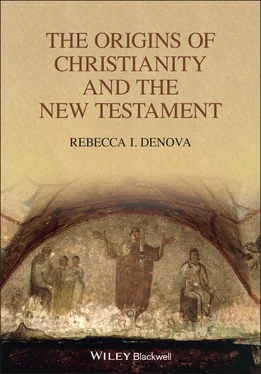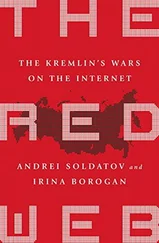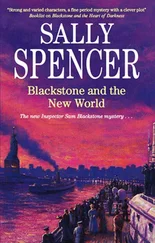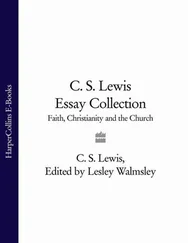Any text that examines the Bible, and especially the New Testament, will encounter the English word “ faith” in translation. However, it was only in the eighteenth century that “faith” was used to describe “belief” in a religious system, particularly in teachings on individual salvation. At the same time, the word “faith” also came to mean “belief” in something despite evidence to the contrary. But the ancients did not often articulate their ideas as “belief” or “faith” as we understand it. “Faith” (derived from the Greek word pistis ) originally meant “loyalty,” in this case loyalty to a set of shared concepts and rituals involved in worship of a god or gods.
The great concern in the ancient world was to carry out rituals involved in the various native cults correctly. The correct rituals were understood to be handed down “by the ancestors.” In ancient Rome, if a priest or augur stumbled over the words, he had to begin again. Several books in the Jewish Scriptures describe the correct way in which to perform the rituals of the Temple cult in Jerusalem.
Beginning with the New Testament, this focus on the rituals of non-Christians became a negative, derogatory way in which to attack both Jews and the native cults; hence the modern concept that the Jews were “legalistic” and were only concerned with “the letter of the Law.” The idea that native cults lacked “spirituality” (Christians had faith, pagans had rituals) still finds its biased way into many books on the early history of Christianity.
In the New Testament, and particularly in the letters of Paul, you will often see the word “ church.” It is translated from the Greek ecclesia , which means “assembly.” The first missionaries apparently modeled their communities on the administrative structure of older Greek city-states and Roman towns, where the term referred to the “assembly” of free citizens who made up local government. In relation to the new groups of the followers of Jesus, a better translation would be “community.” Translating this as “church” conjures up images of church buildings and institutional hierarchy. Both were part of later Christian evolution. In the earlier communities there were no “churches;” people met in each other’s houses. In each of the chapters, I will highlight other translation issues that are problematic as they arise.
Often mentioned in association with “churches,” “ spirit” is understood to be “the spirit of God” or “the spirit of Christ” (in Paul’s letters) and not the third element of the later concept of “The Trinity” (fourth century ce). This is the spirit of God that breathed life into Adam and “possessed” the Prophets of Israel. This is the “spirit” that comes upon Jesus in the gospels at his baptism (the symbol of the dove) so that he was enabled to perform miracles. English Bibles, reading back later trinitarian concepts, always translate this with capitals, “Holy Spirit.”
Polemicis a verbal or written attack against an opponent, either real or imagined; rhetoricis the art of persuasion, often calling upon figures of speech and stereotypes, and designed to convince an audience of one’s arguments or point of view. (We are familiar with these terms in relation to contemporary politics and charges of “fake news” from both sides.)
Polemic and rhetoric are literary devices applied by all writers in the ancient world. In polemical writings, opponents may be named or constructed in what is known as “a straw man.” “Straw man” is the idea that the opponent’s arguments (as reported by the writer) are always shown to be wrong and thus defeated. Polemic is not “evidence.”
Throughout the Jewish Scriptures and the New Testament, we have numerous examples of these literary devices. It was a favorite device of Jewish Prophets against idolatry and the gospels’ portraits of the Pharisees and the Sadducees and anyone who opposed Jesus.
The Problem of Anachronism
What is anachronism? It is placing something out of its own time and place, usually to a later time or place. The best way to understand this is the example of what are known as “gaffes” in Hollywood movies. It is like watching a movie that takes place in the 1970s where people are using cellphones.
Anachronism is the bane of all historians. This is because we are modern humans. It is difficult to set aside our own experiences and knowledge so that we can be entirely objective. We expect objectivity from historians, but it is virtually impossible. All historians must decide what they think is important, and so you have immediate subjectivity in the selection. Knowing the “end” always influences understanding the past. For example, it is very difficult to write a history of World War II and ignore how it ended.
New Testament scholars and historians do not escape this problem. Reading the books of the New Testament within the frame of their original historical context is quite a challenge. We know that these texts became the basis of a new, independent religion, Christianity. But the writers at the time did not know this . Complicating our reconstructions is the fact that historians and theologians have 2000 years of Christian theology that is so often “read back” into the texts.
As a historian of ancient religions (I also research the religions of Egypt, Greece, and Rome), I face the same struggles as other historians. I will attempt in every chapter to try and avoid such pitfalls where I can. I will often insert a modern analogy, simply to help with the reading and the reconstruction of early Christianity. You will be able to distinguish an analogy from anachronism.
Modern analyses of Biblical literature are sometimes offensive to readers in their descriptions of ancient texts. Many historians conclude that a story was “made up,” but this is the way in which ancient writers went about their craft. Historians such as Herodotus, Polybius, and Livy, for example, had access to “manuals” that provided the rules. You were expected to “make up speeches.” In a speech by a general before the troops were sent into battle, no one “took notes.” Instead, the writer created a speech that highlighted the known characteristics of the general. He was then judged on how well the speech fit the occasion. Both the writers/editors of the Jewish Scriptures as well as the New Testament utilized this device. This is especially so in the hundreds of speeches in Luke’s Acts of the Apostles.
Perhaps a better way in which to explain this type of writing is found in the modern category known as “creative nonfiction.” Creative nonfiction portrays real people and events, but with material added for dramatic effect. Creative nonfiction is employed by poets, playwrights, and screenwriters. In film “biographies,” speeches are added to highlight the meaning behind an event or to indicate what the person was “thinking.” We have the same process in ancient literature.
The First Quests for the Historical Jesus
Ever since the Renaissance, Europeans had been enthralled with the rediscovery of the literature and art of ancient Greece and Rome. When Napoleon invaded Egypt in 1798, he brought engineers and surveyors to record the monuments. The discovery of the Rosetta Stone decoded the lost art of hieroglyphs and “Egyptomania” became all the rage in Europe.
In the 1850s, Darwin’s work on the theory of evolution motivated men and women to begin digging up the Middle East (sometimes in the hope of proving him wrong). Europe learned of the great civilizations of Mesopotamia, Sumer, Assyria, and Babylon. The rise of the social sciences (Anthropology, Archaeology, Sociology, and Psychology) provided new criteria for the study of humans and human civilization.
Читать дальше












